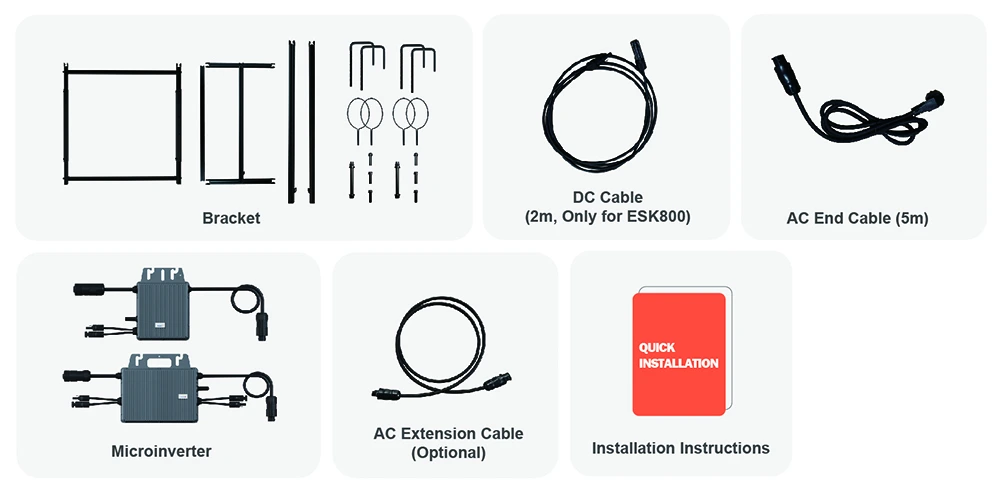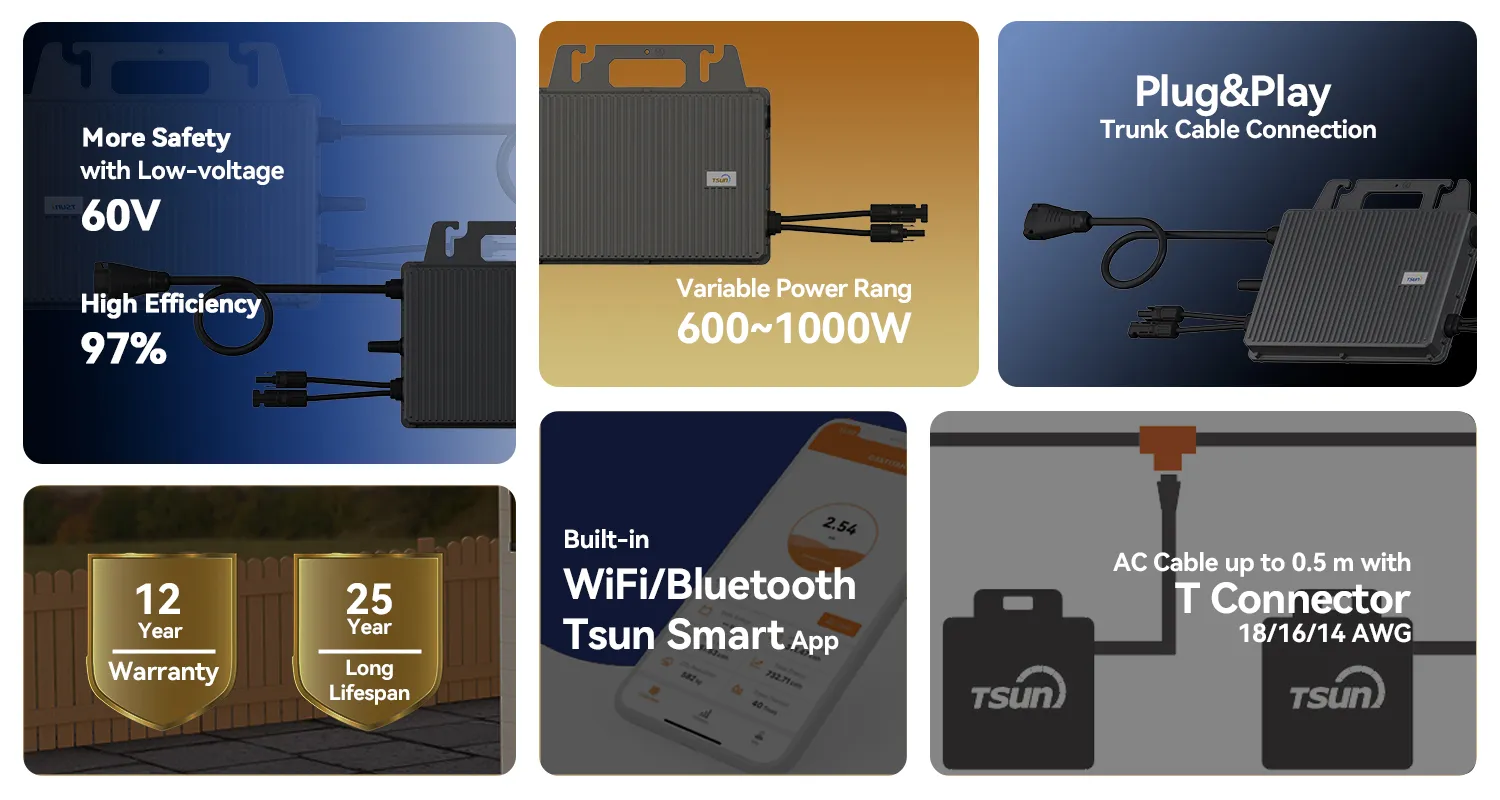Easy Solar Kit (with microinverter)
 LEARN DETAILS
LEARN DETAILS
 News
News
Table of contents

(home batteries for solar storage)
As residential solar power adoption continues to accelerate, households are increasingly seeking reliable ways to maximize their investment in renewable energy. Home batteries for solar storage provide a critical solution, enabling energy generated from photovoltaic systems to be reserved for use during nighttime, cloudy days, or grid outages. This technology transforms traditional solar setups into robust, efficient, and flexible systems. Home consumers can now achieve greater energy independence, reduce reliance on utility grids, and decrease electricity costs. The integration of smart management systems further improves the value proposition, delivering seamless automation and real-time energy monitoring capabilities.
Across the globe, the demand for storage batteries for home solar power is surging. According to the International Energy Agency, as of 2023, over 4 million residential solar battery systems have been installed worldwide, showcasing a growth rate exceeding 35% annually since 2020. In the United States alone, residential battery installations increased by 133% from 2021 to 2023. Europe is rapidly catching up, with Germany, Italy, and the UK collectively accounting for nearly 1.6 million systems. A key driver is energy security: 82% of surveyed homeowners cite blackout protection as their principal motive, followed closely by the desire for lower electricity bills. Performance metrics show that contemporary batteries can deliver between 5 kWh and 20 kWh usable capacity, while round-trip efficiency averages 90-95%. These numbers underscore the importance and effectiveness of investing in batteries for home solar storage.
Recent advancements have positioned contemporary batteries as both technically superior and highly reliable. Lithium iron phosphate (LiFePO4) chemistry dominates due to its robust safety record, long lifecycle (upwards of 6,000 cycles), and minimal maintenance requirements. Innovations in battery management systems (BMS) deliver intelligent thermal protection, performance optimization, and seamless integration with home energy management platforms. Modular formats allow easy scalability—from a single-family dwelling to larger estates—adapting to evolving consumption patterns. Smart inverter technology supports bi-directional power flows, auto-islanding during outages, and real-time system diagnostics. Integration with grid services through virtual power plant (VPP) participation opens new revenue streams for homeowners, while IP-rated enclosures guarantee reliable operation even in harsh environments. Collectively, these features strengthen the case for adopting storage batteries for home solar power at scale.
Selecting the optimal battery solution hinges on balancing capacity, efficiency, warranty coverage, and compatibility. The following table contrasts leading products on the market:
| Manufacturer | Model | Usable Capacity (kWh) | Round-trip Efficiency | Cycle Life | Warranty (years) | Price per kWh (USD) |
|---|---|---|---|---|---|---|
| Tesla | Powerwall 2 | 13.5 | 90% | 5000 | 10 | ~550 |
| LG Energy Solution | RESU 10H Prime | 9.6 | 95% | 6000 | 10 | ~630 |
| Sonnen | eco 10 | 10 | 87.5% | 10000 | 10 | ~700 |
| Enphase | Encharge 10 | 10.5 | 89% | 7300 | 10 | ~600 |
| BYD | B-Box Premium HVS | 10.2 | 96% | 6000 | 10 | ~580 |
As illustrated, key differentiators include battery chemistry, usable capacity, and cycle life. Tesla’s Powerwall 2 leads in capacity, while Sonnen boasts industry-leading cycle life. LG and BYD offer high efficiency, optimizing storage throughput. Price competitiveness remains high, with costs averaging $550–$700 per usable kWh. Consideration of local support and system integration capabilities should further direct buyer choice.
There is no universal blueprint when it comes to installing batteries for home solar storage. Each housing type—apartment, detached house, multi-story dwelling—requires bespoke energy modeling and precise capacity sizing. Factors such as average daily consumption, peak load requirements, local energy tariffs, and solar PV system size greatly influence system configuration. For instance, a household with average daily energy use of 20 kWh might install a 10-13.5 kWh battery to cover overnight demand, while a home in an area with frequent blackouts may opt for modular expansion up to 30 kWh. Advanced installers employ load profiles and smart meters to optimize battery charge and discharge cycles, ensuring maximum savings while preserving battery life. Integration with home automation platforms enables appliances to operate in harmony with energy storage, balancing comfort, convenience, and sustainability. Future-ready systems also include vehicle-to-home (V2H) capability and off-grid transition modules for greater flexibility.
Diverse households across continents have benefited from adopting storage batteries for home solar power. In California, a hybrid PV-plus-battery installation allowed a family of four to cut grid consumption by 80%, saving approximately $2,200 annually. After a 2022 Texas storm event, battery-equipped homes reported uninterrupted power while neighbors faced outages, with one subdivision achieving near-complete energy autonomy for up to 36 hours. In Australia, 60% of new solar installations now include storage, propelled by incentive schemes that have reduced payback periods to under six years. In Germany, combining a 10 kWh battery with a 6 kW PV array enables typical households to increase solar self-consumption from 35% up to 75%. Commercial multifamily projects have even pooled battery systems, trading surplus energy within the community via microgrid technologies, generating both financial and resilience advantages. These cases exemplify the tangible impact, scalability, and adaptability of home batteries in maximizing the benefits of solar energy.
Looking ahead, home batteries for solar storage
are set to play a pivotal role in enabling the global transition toward decentralised, low-carbon energy systems. Improvements in battery chemistry—solid-state and sodium-ion—promise greater safety, density, and sustainability, potentially reducing reliance on rare raw materials. Artificial intelligence-powered energy management will further optimize system performance, tailoring storage and discharge patterns to real-time electricity pricing and household behavior. The expansion of residential energy trading platforms will allow homeowners not only to store but also to profitably share or sell electricity. As regulatory frameworks evolve and cost curves continue their downward trajectory, mass adoption will become the norm, transforming every solar-powered home into an active participant in the distributed grid. Investing in batteries for home solar storage is no longer a luxury but a strategic imperative for energy independence, security, and sustainability.

(home batteries for solar storage)

